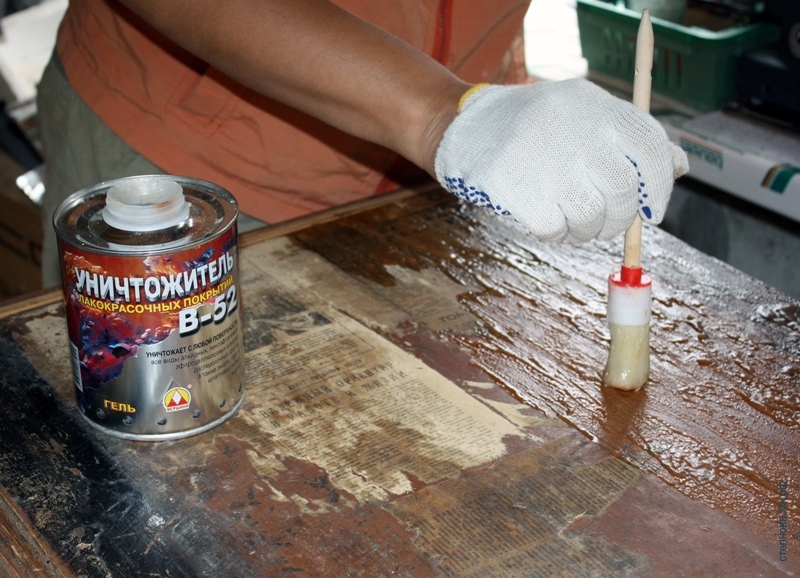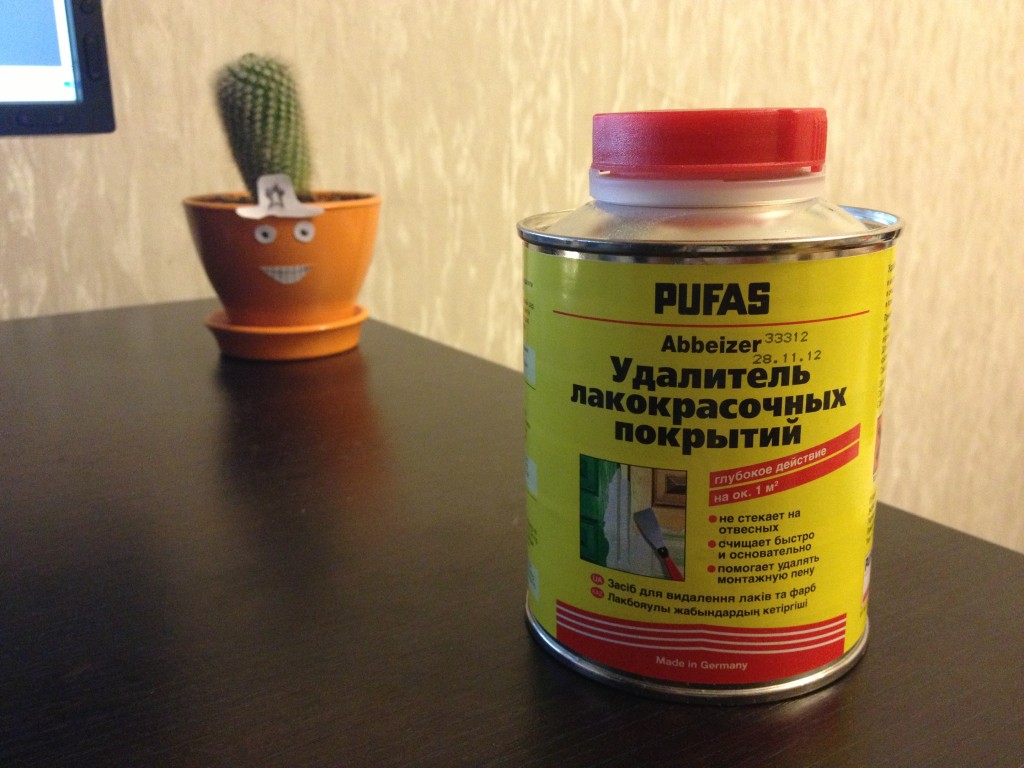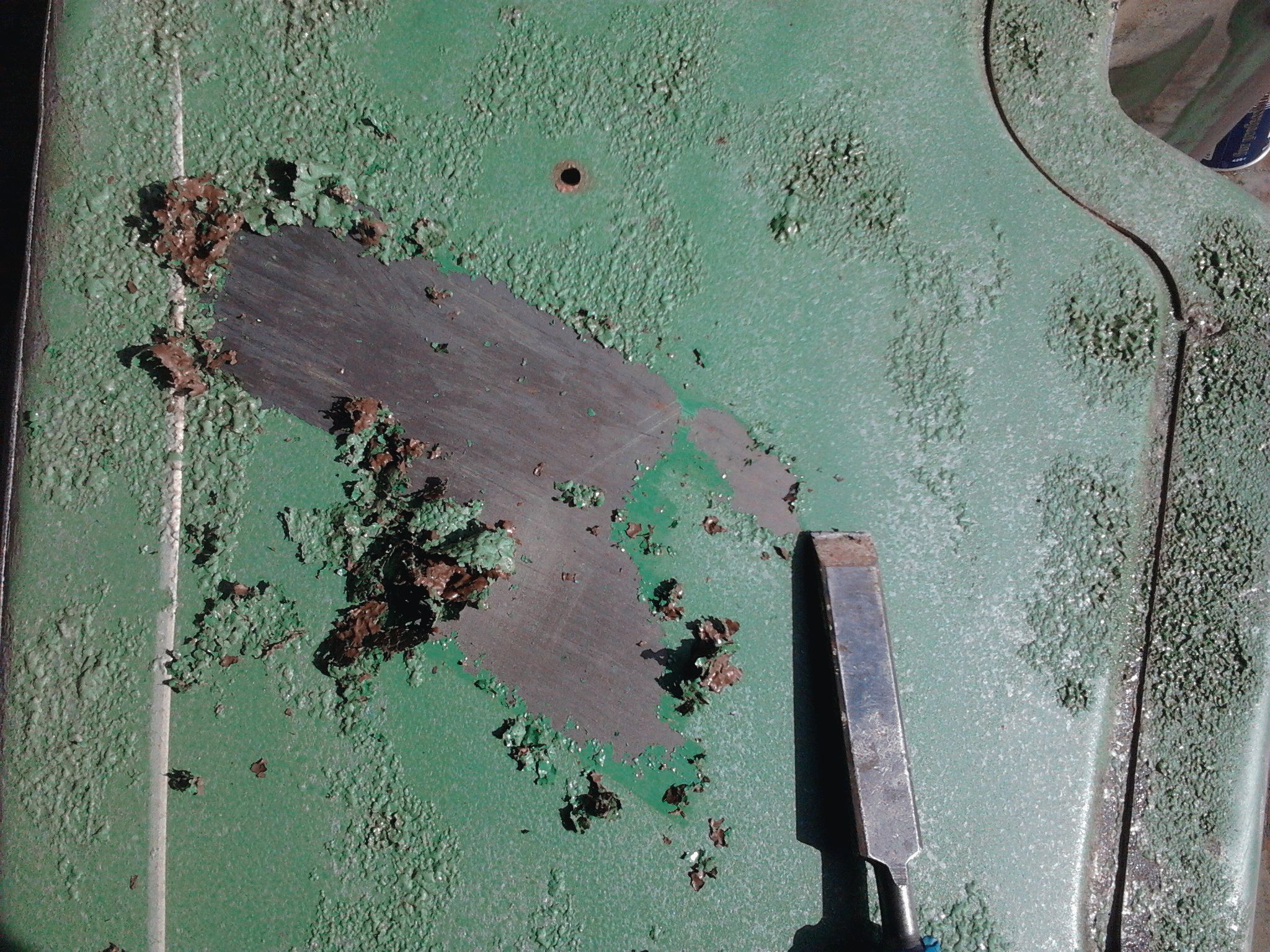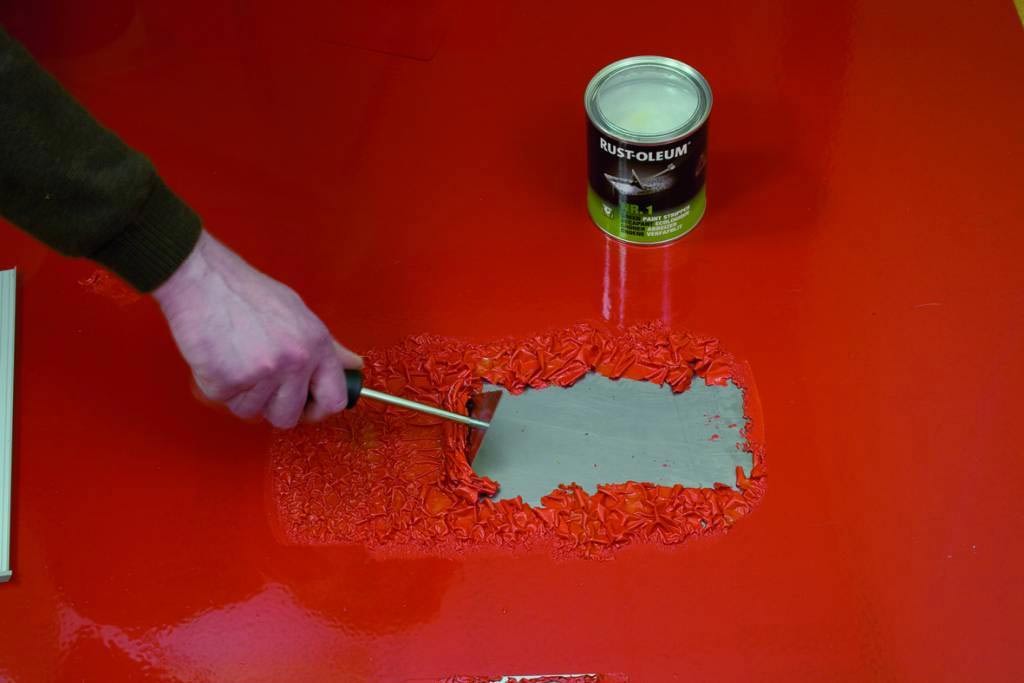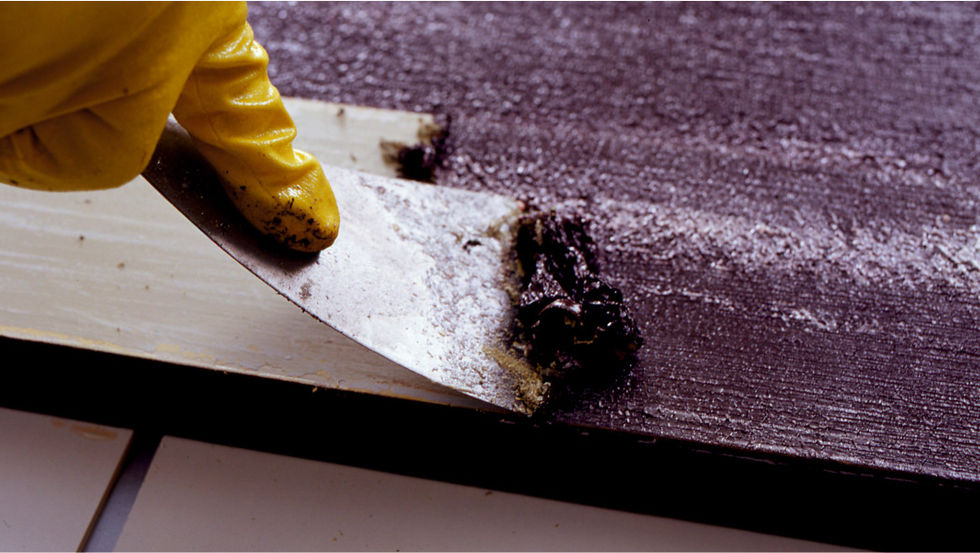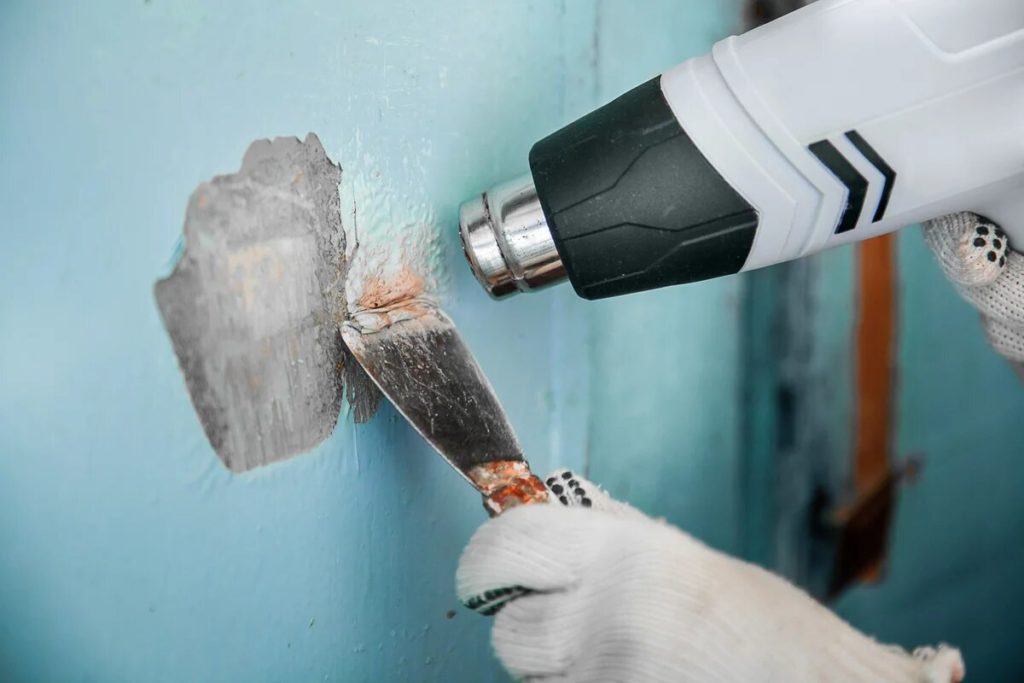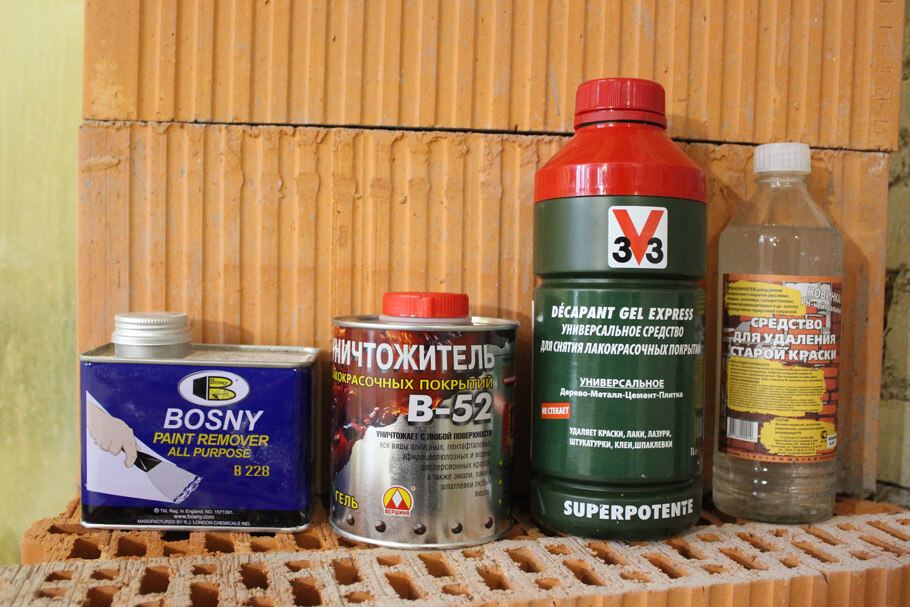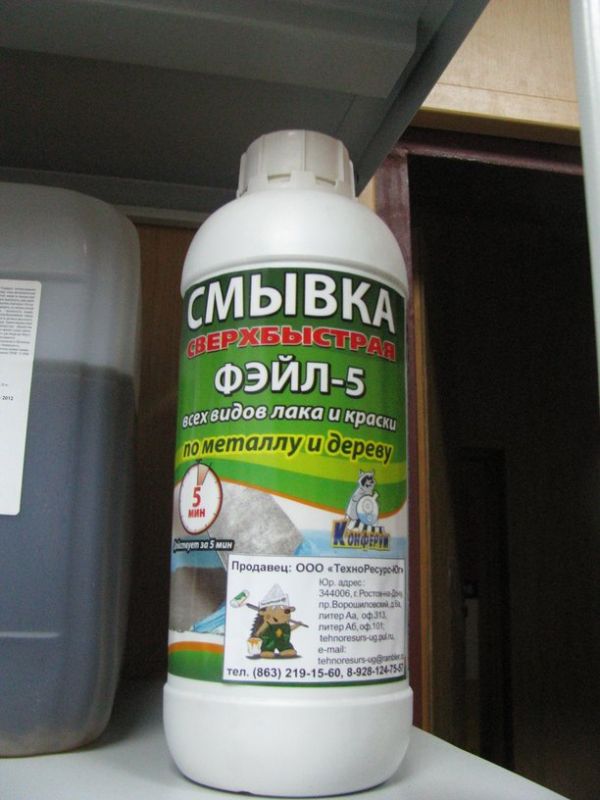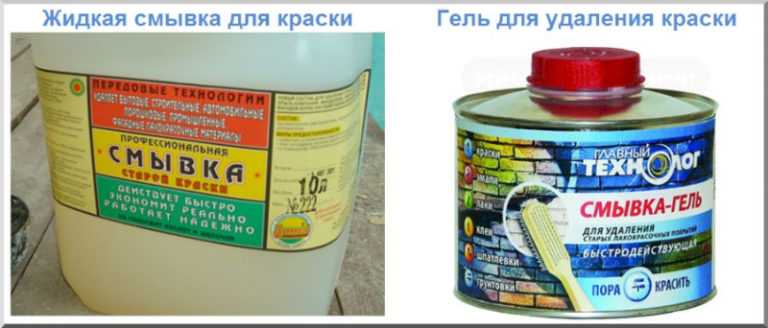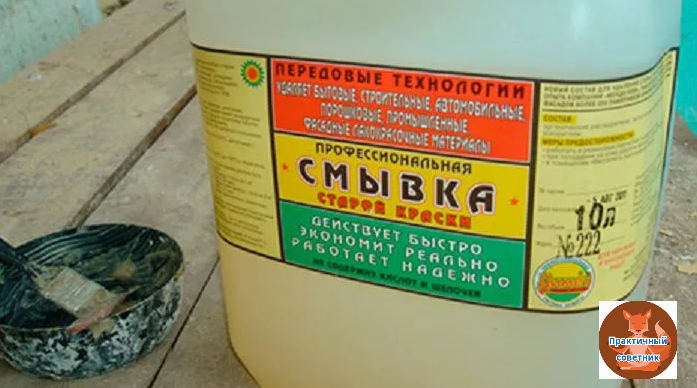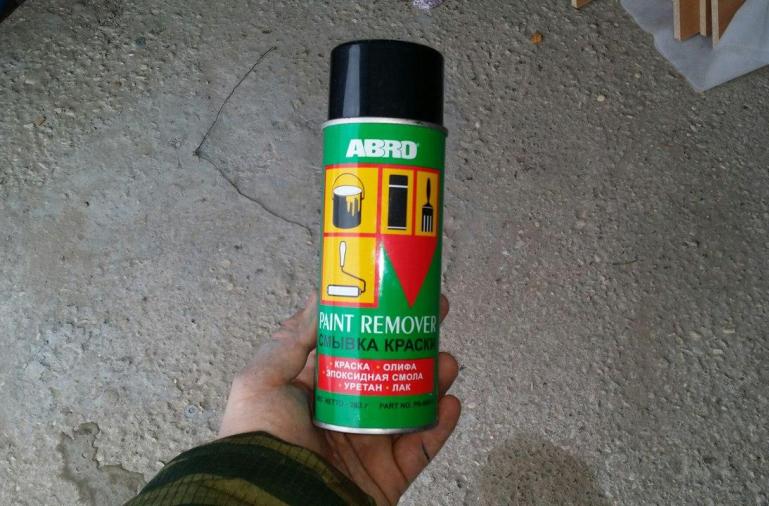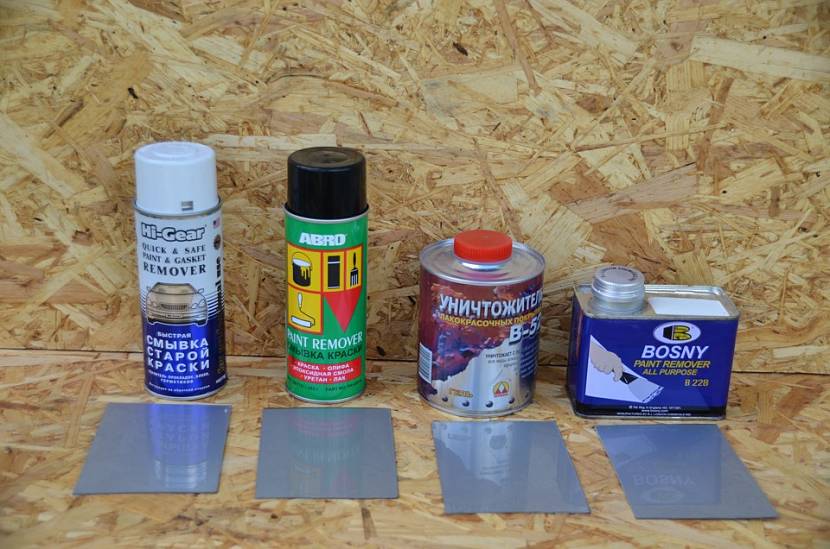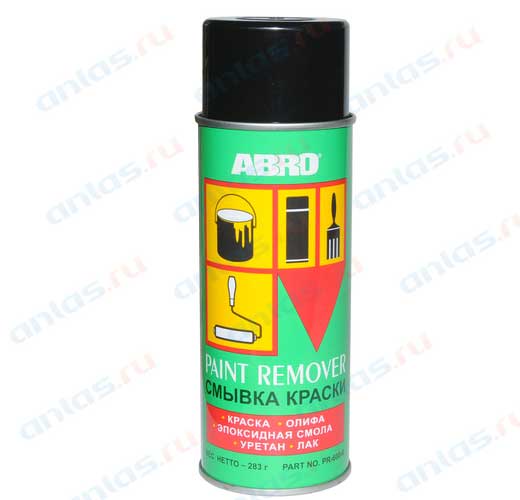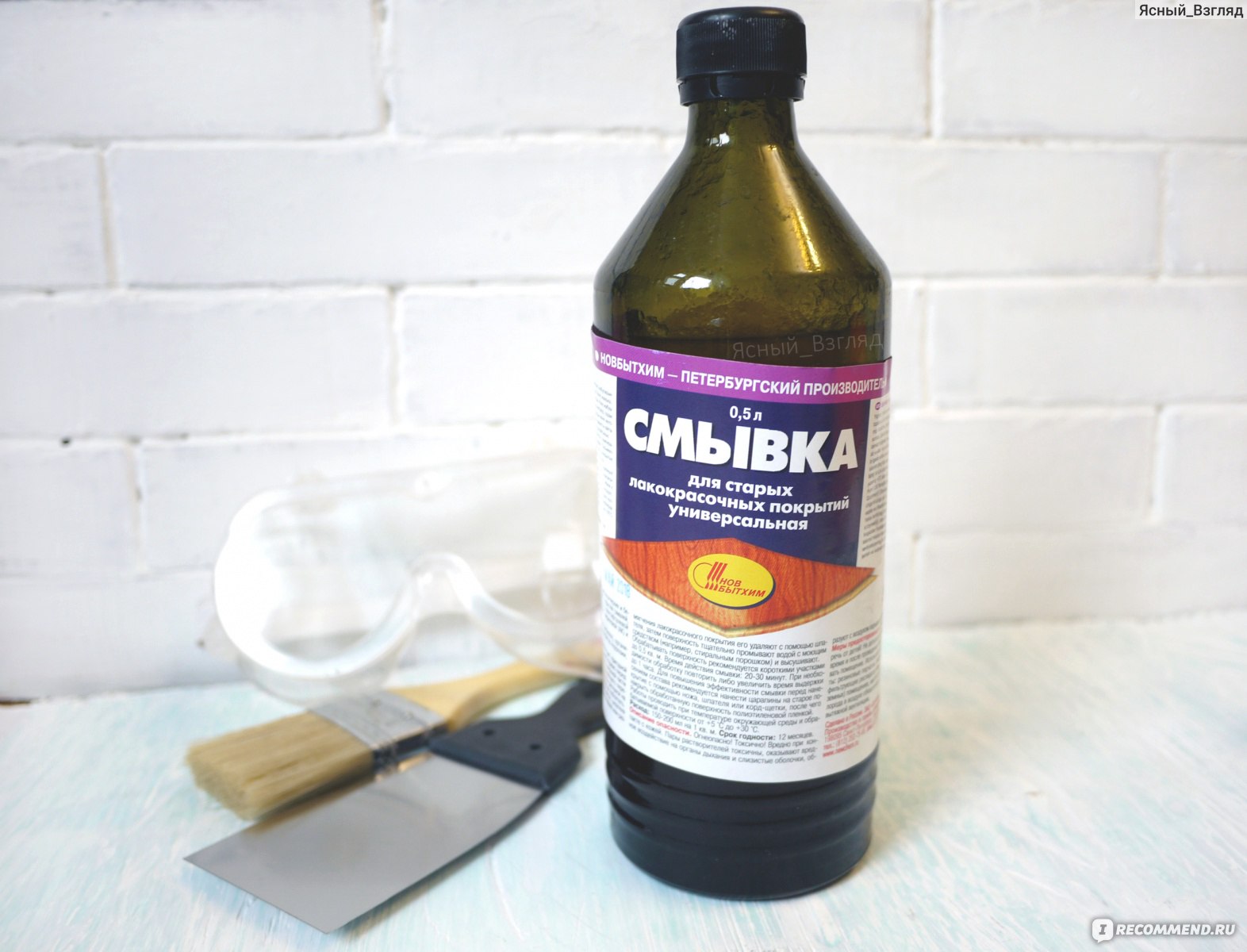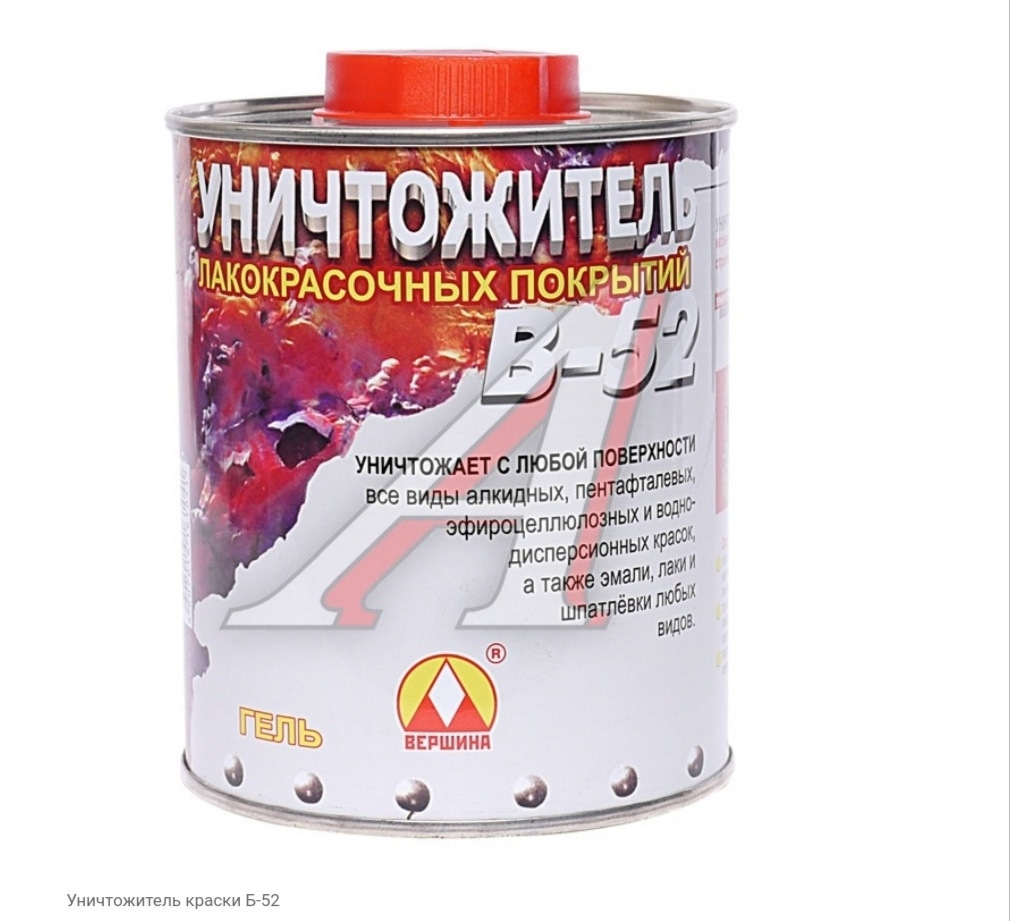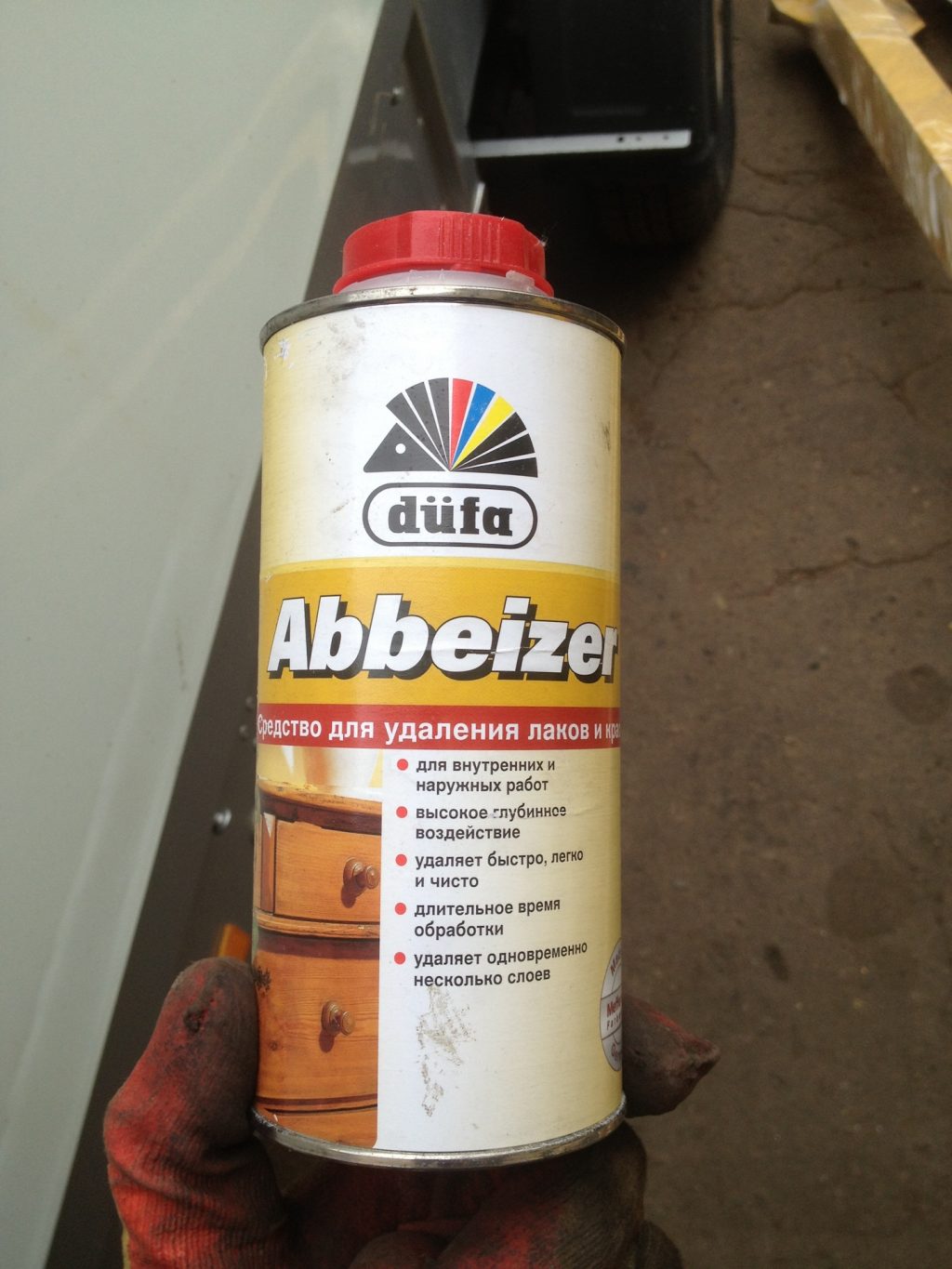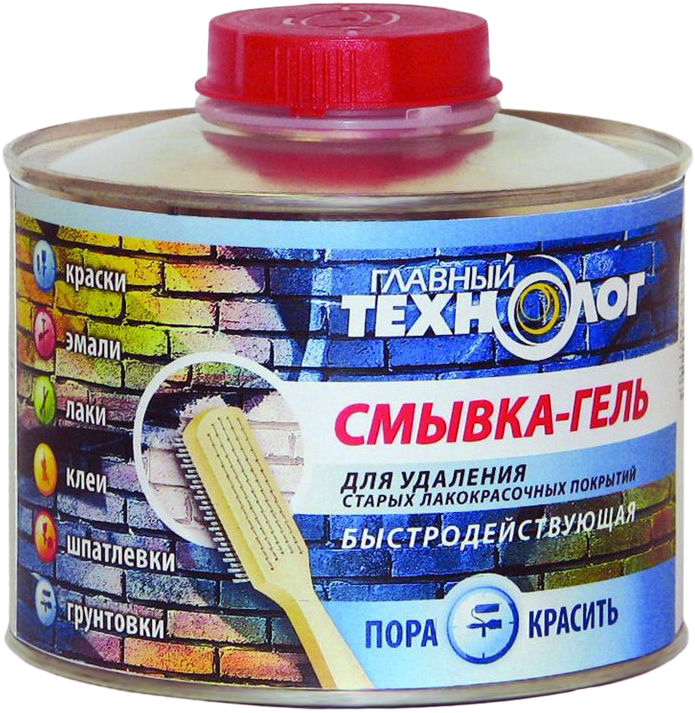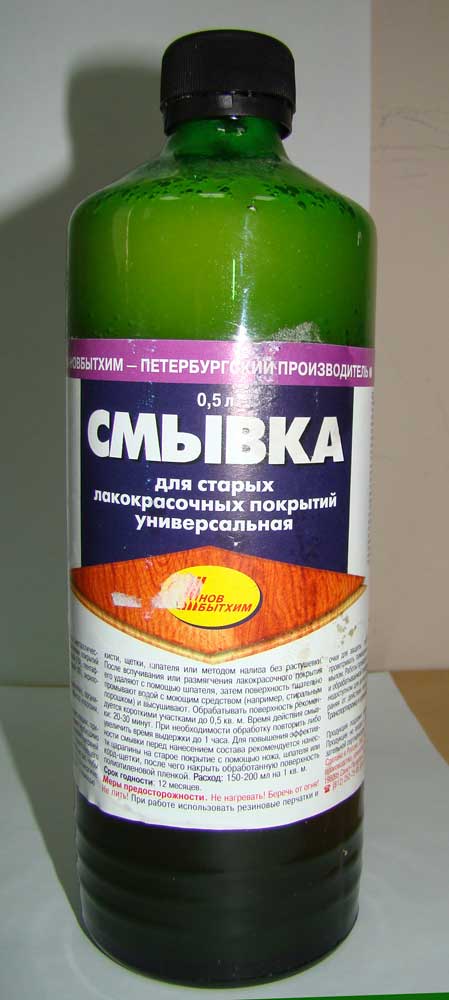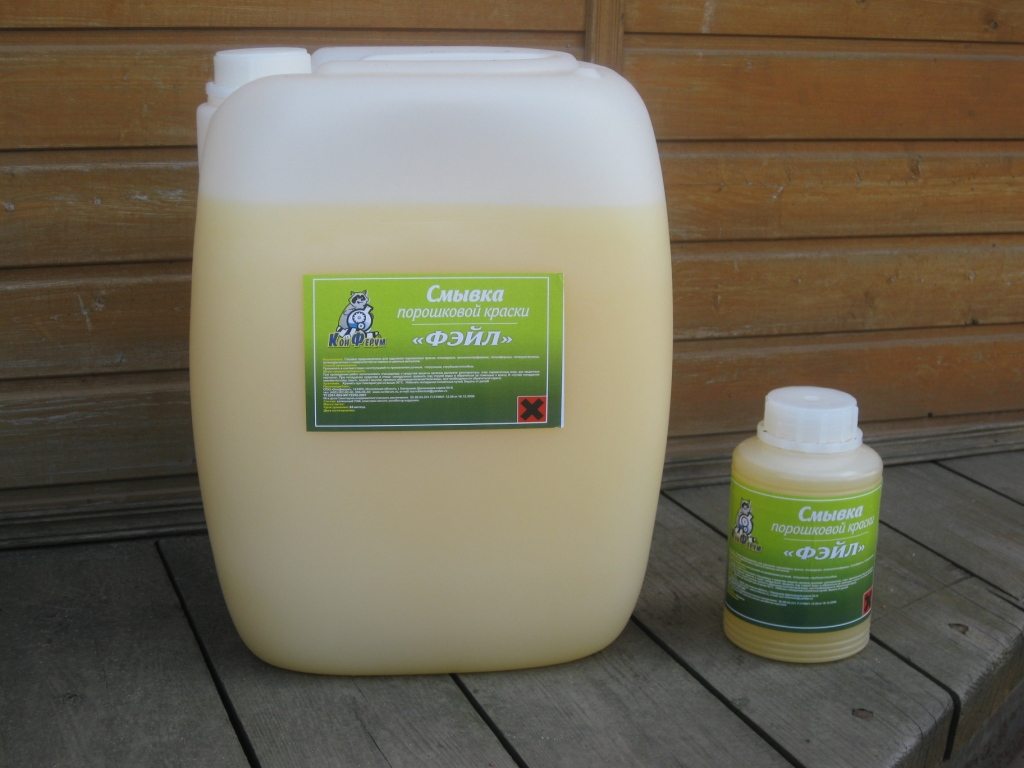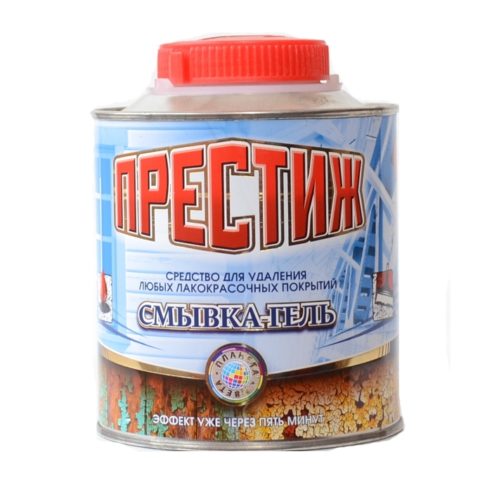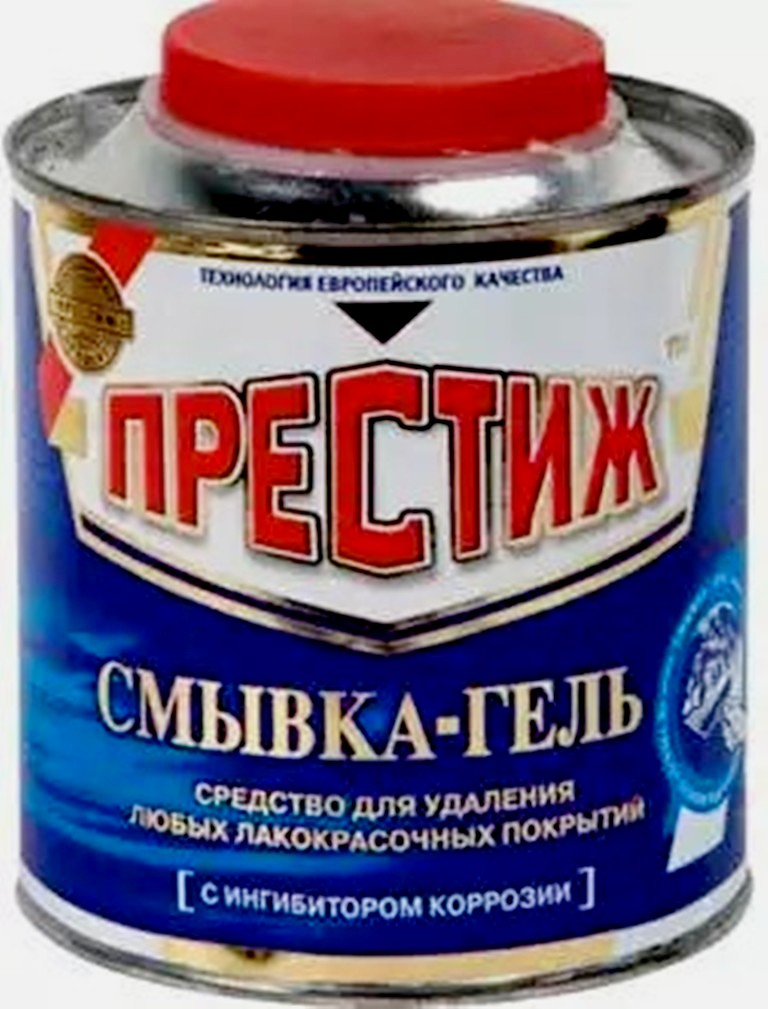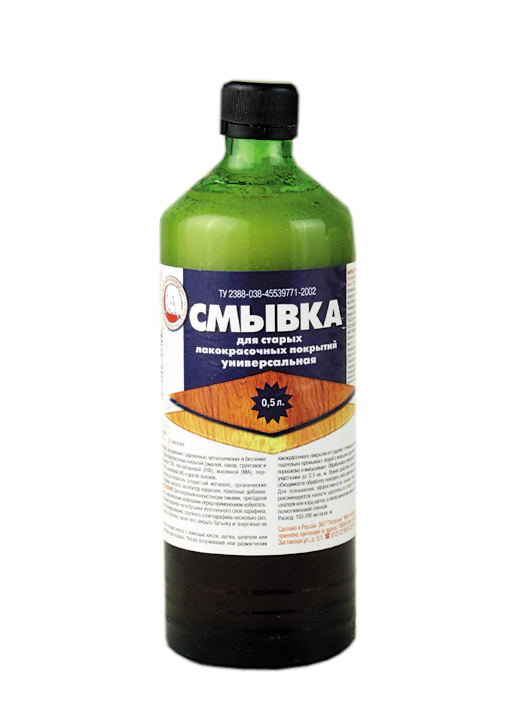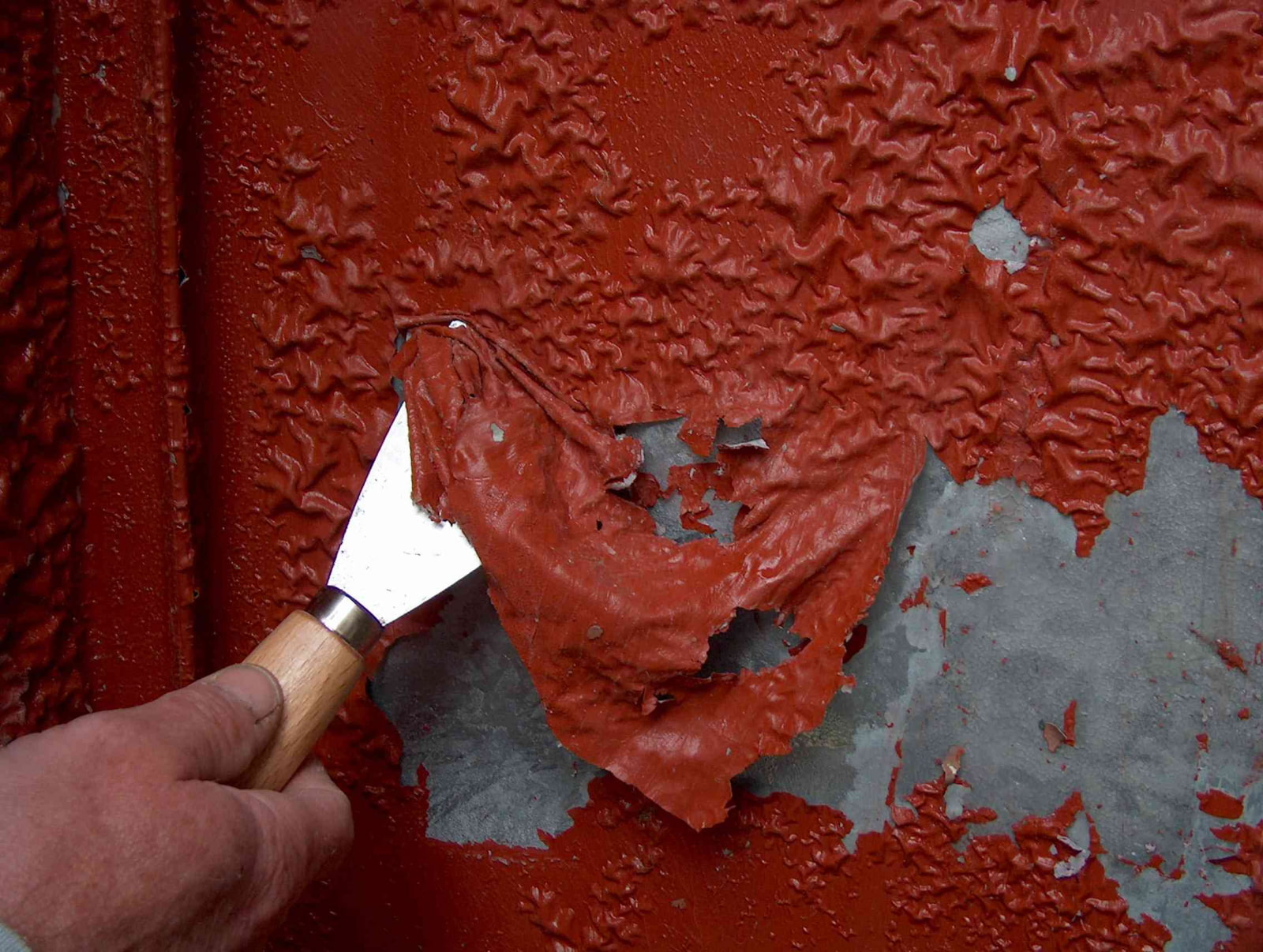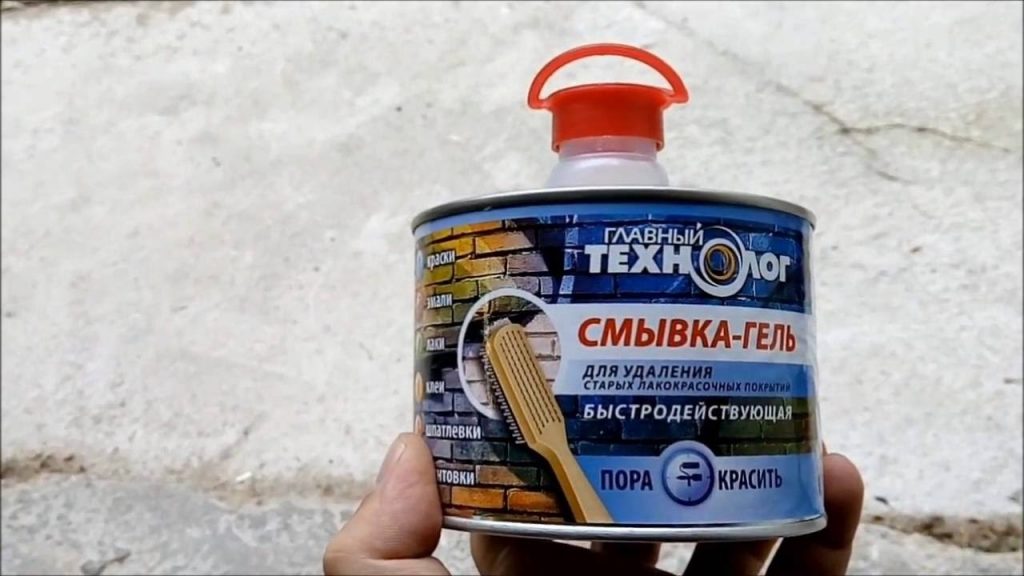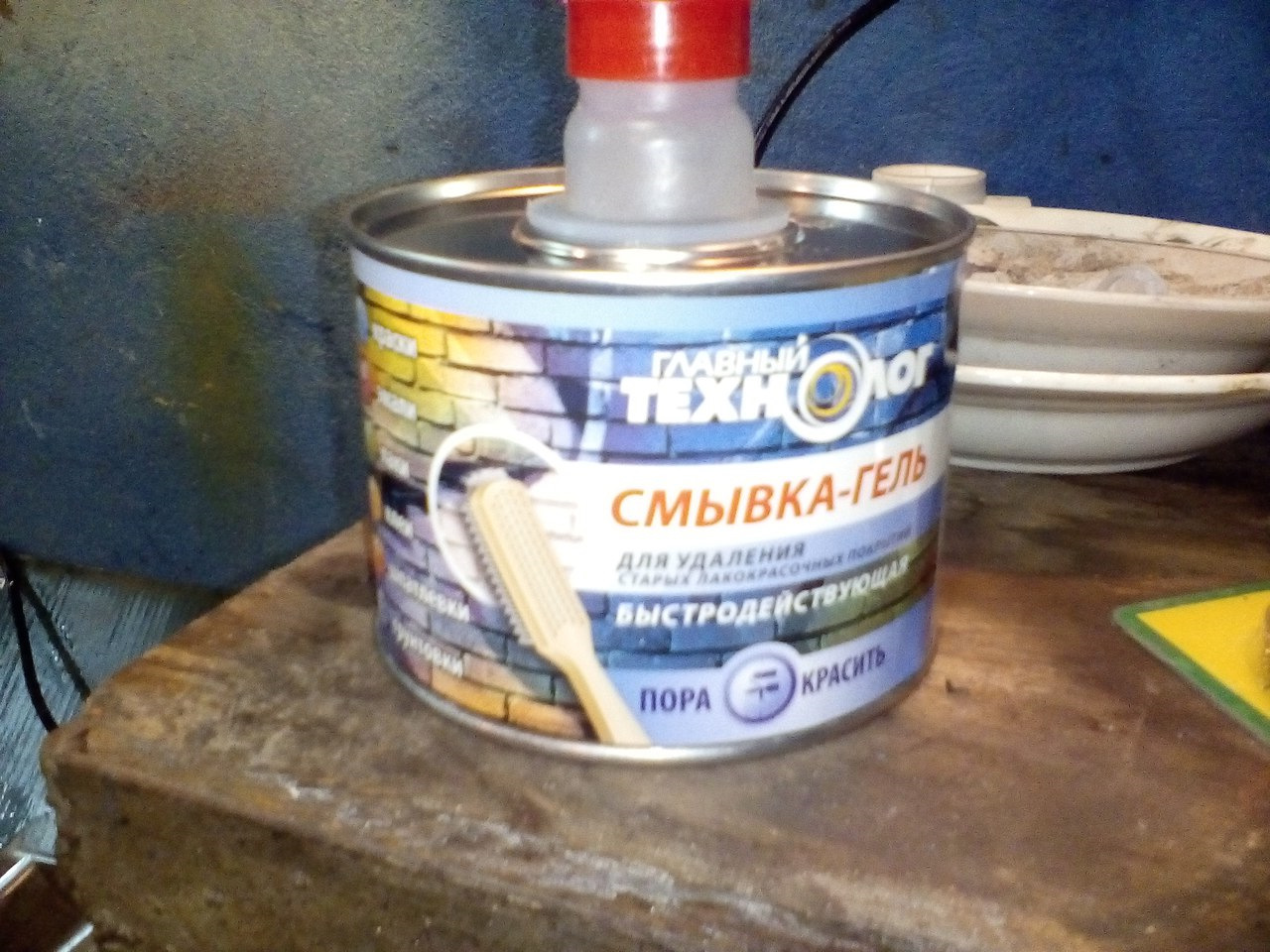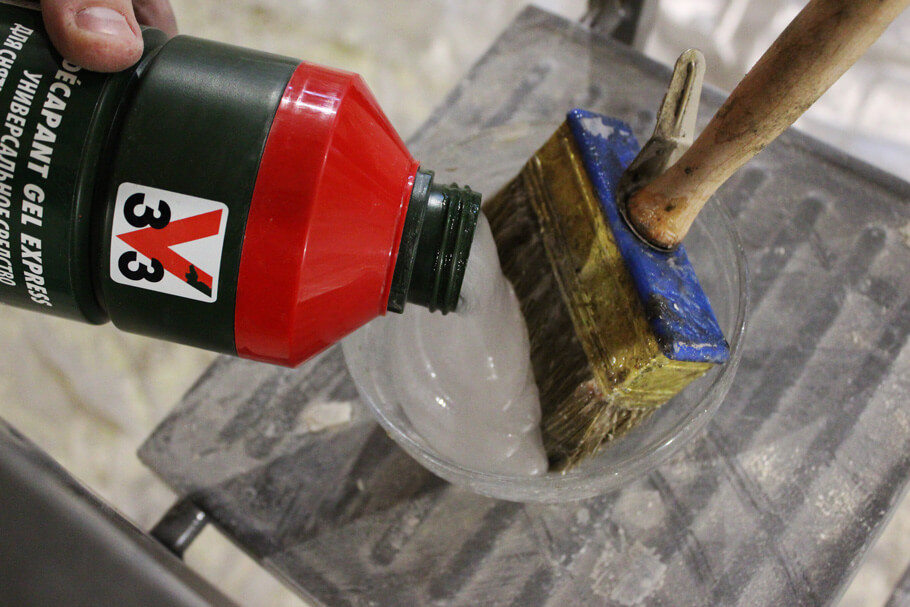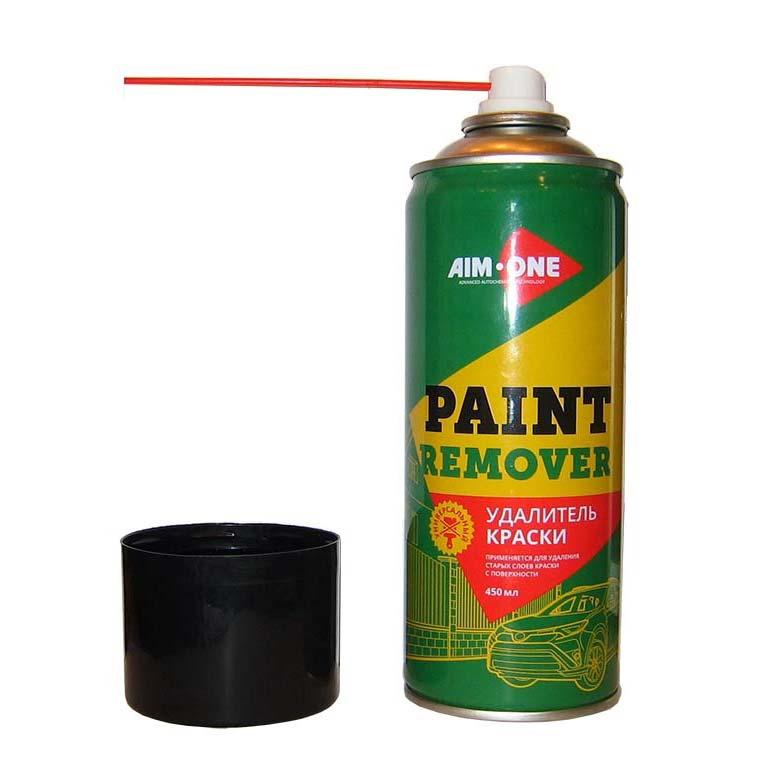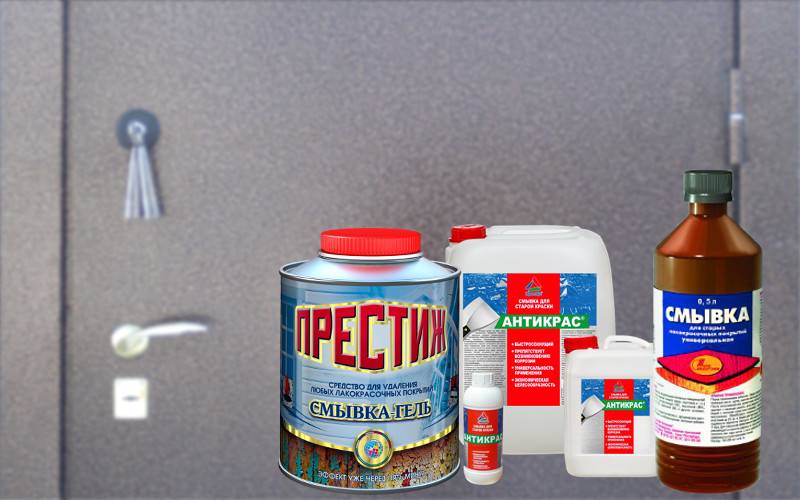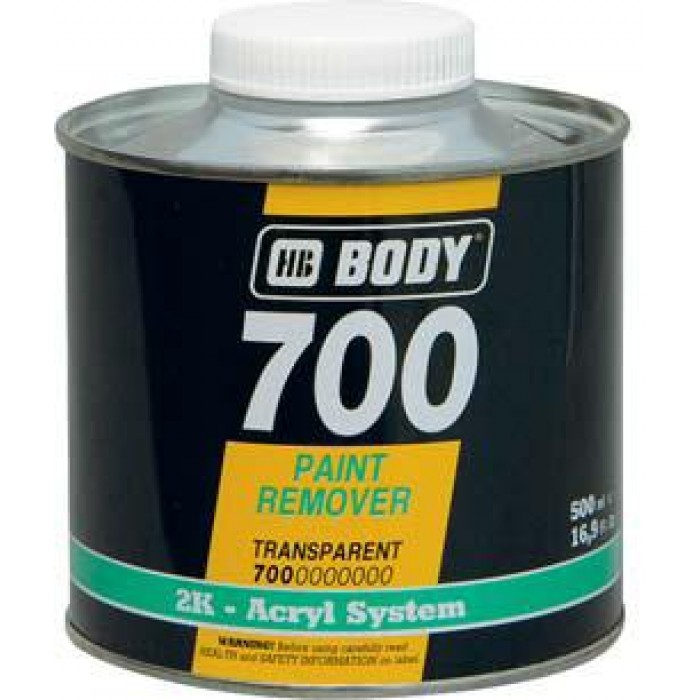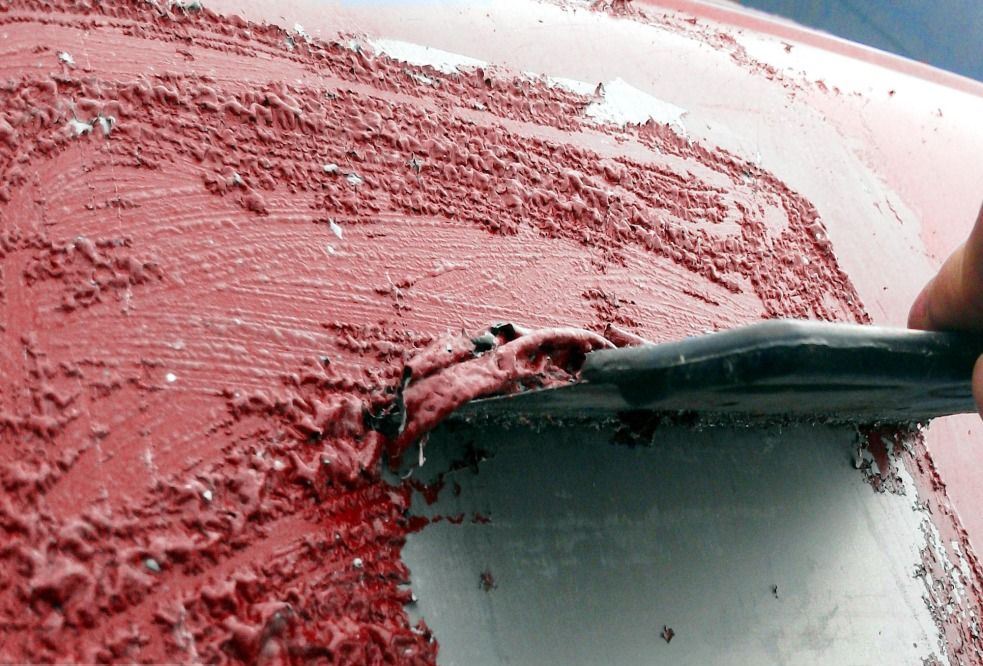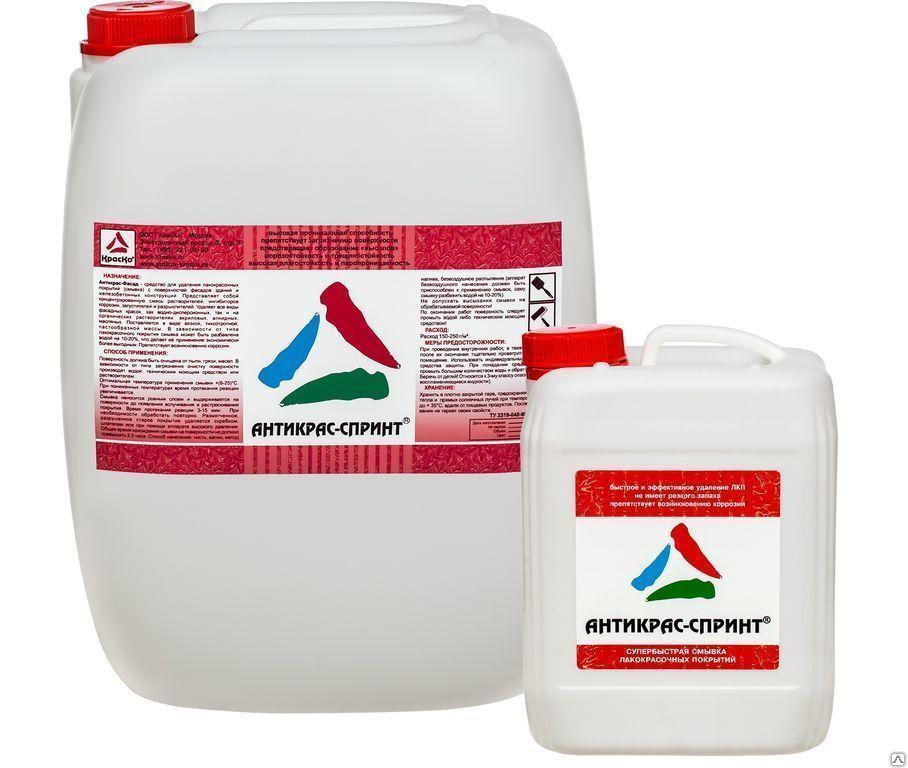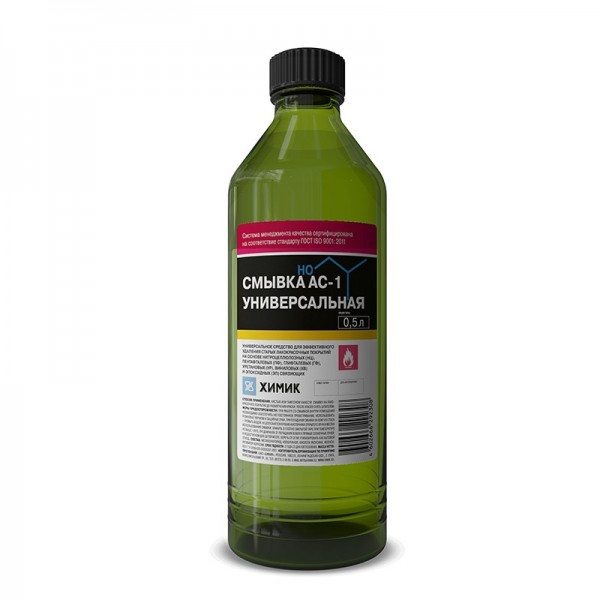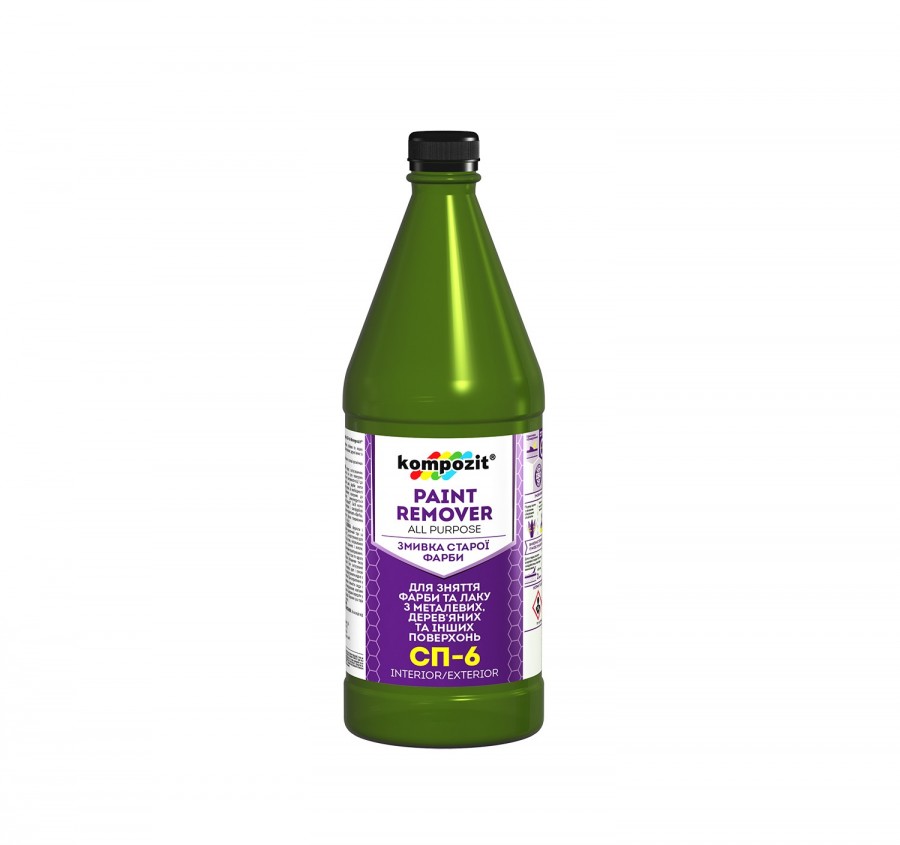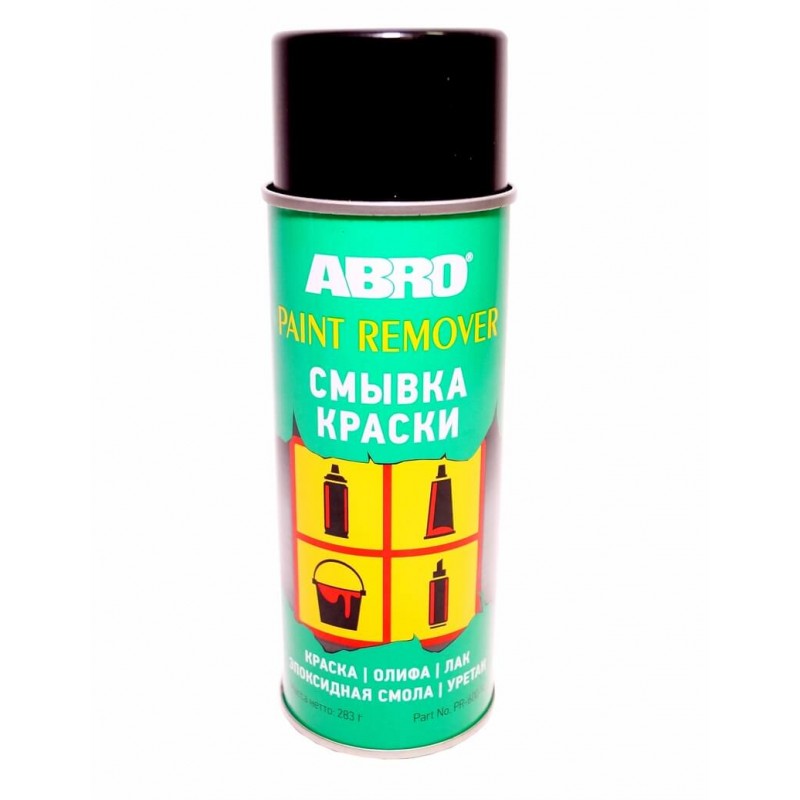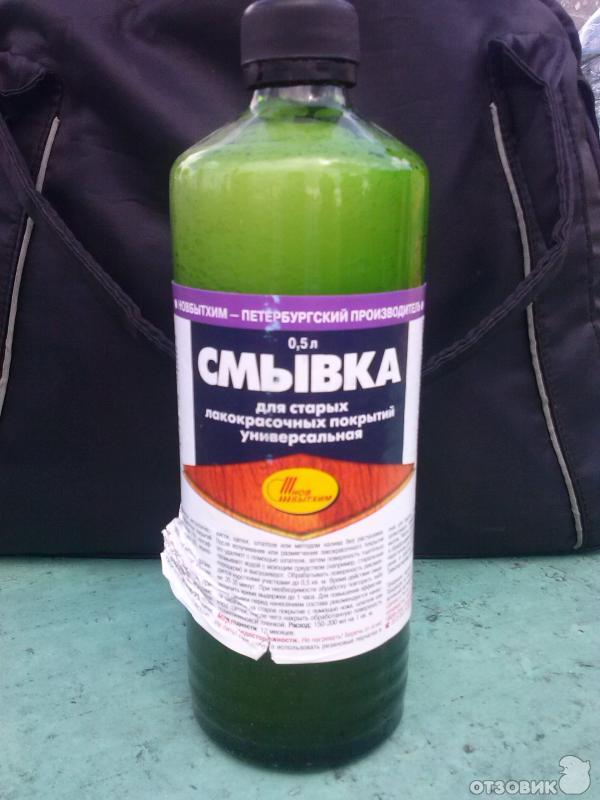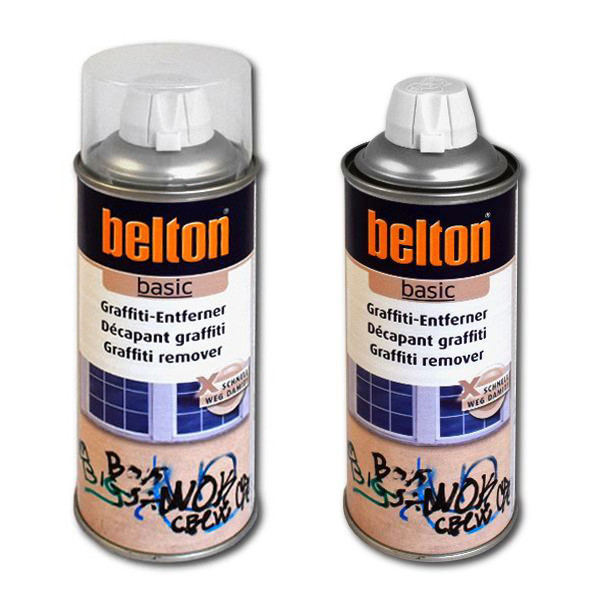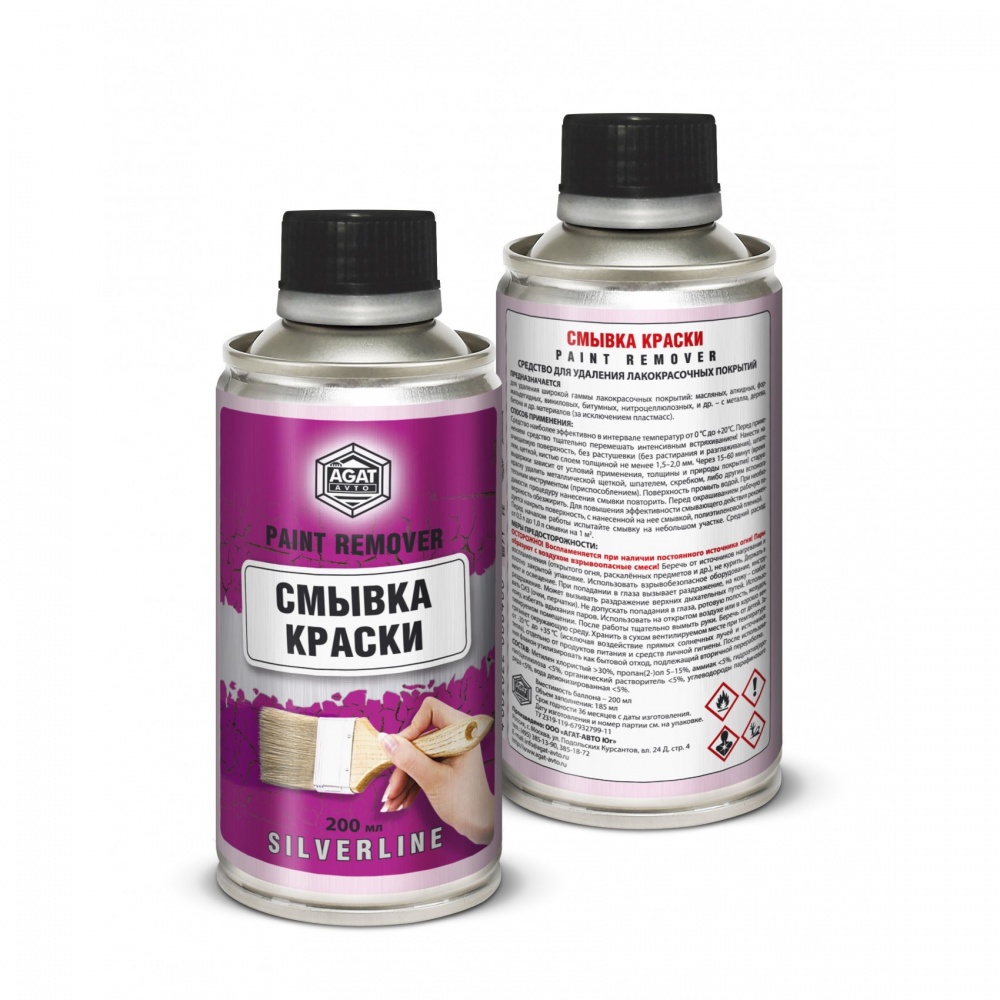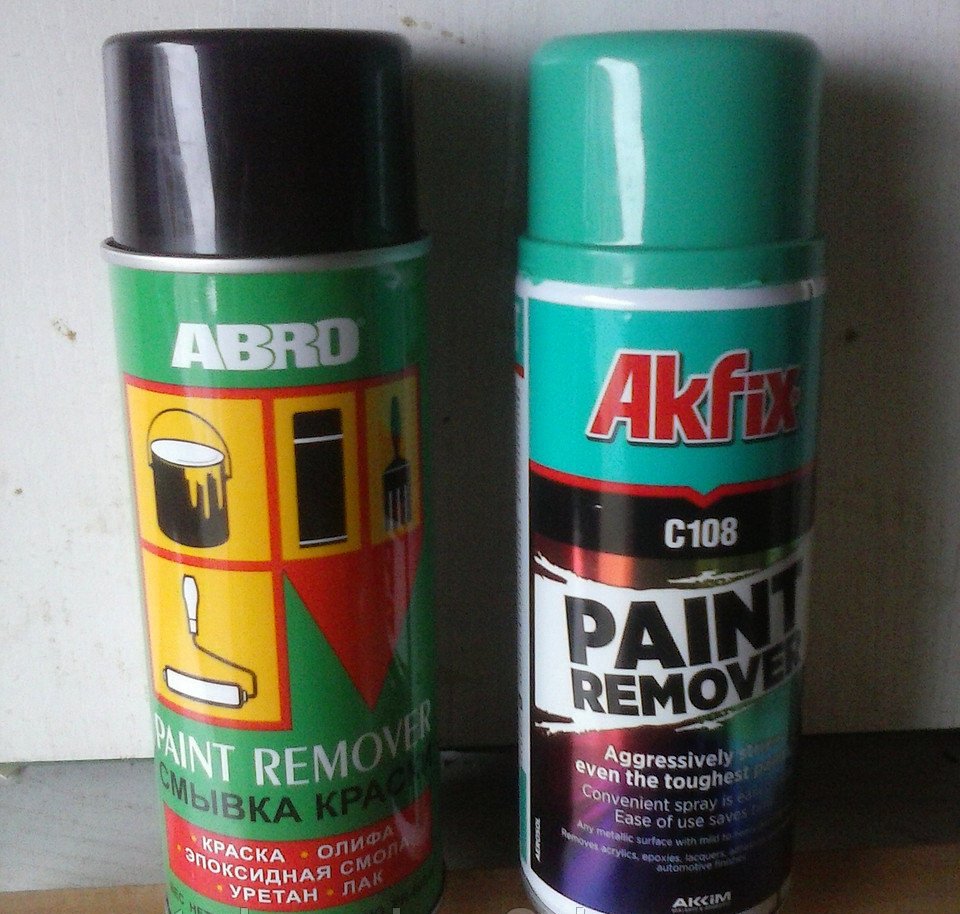How to remove various types of paint from metal
Methods and liquids for removing paint from metal should be used according to the type of coating. Otherwise, they may be ineffective. As a result, time and money will be spent, and the desired result will not be achieved.
How to wash acrylic paint from metal
It is not difficult to cope with acrylic. In this case, several methods can be used depending on the thickness of the layer and the time available for cleaning.
In a small area, you can remove the old acrylic paint using any sharp object: a knife, spatula or a special metal brush. At the end of the procedure, it is recommended to carry out a final polishing of the surface with emery paper.
Dissolving the remnants of old paint from metal will help:
- White Spirit;
- kerosene;
- acetone;
- refined gasoline.
You can also remove acrylic paint from metal using a hot soapy solution with the addition of alcohol, since this component destroys the structure of the coating. For processing, you will need to abundantly moisten the sponge in the prepared liquid and apply it evenly on the surface to be treated, cover with polyethylene for 30 minutes. After the time has elapsed, remove the top layer with a spatula. Repeat the procedure until you can completely remove the paint.
You can clean it faster with a special liquid for removing acrylic paint from metal. If you wish, you can use the Abbeizer labeled POLI-R.
Washing principle:
- Stir the product thoroughly.
- Apply this metal paint remover to the surface to be treated with an even layer using a brush.
- Wait 5-10 minutes, remove the peeled layer of old paint.
- Repeat if necessary.
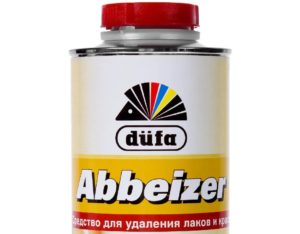
Use the wash only in a well-ventilated area.
How to remove powder paint from metal
Powder dyes are characterized by a higher level of stability and adhesion, so more effort is needed to remove them from the metal. In this case, mechanical and thermal effects must be completely excluded, since these methods will be useless. To remove old powder paint from metal, use special chemical removers for this type of coating.
Procedure:
- Wash off dust and dirt from the metal surface, and then dry it thoroughly.
- Apply the remover with a brush to the entire surface of the product, and if it is small, then completely immerse it in the working solution.
- The layer must be constantly renewed or stirred until the old paint completely swells.
- Wait 20 minutes.
- With a spatula, remove the exfoliated areas of the coating.
- Repeat the procedure if necessary.
- Remove the remains of the wash with sodium phosphate or its solution.
How to remove oil-based paint from metal
To remove the old layer of oil paint, mechanical and thermal cleaning methods can be used, or an appropriate chemical agent can be selected.
In the first case, it is recommended to use a drill with attachments to remove the top layer, and for final cleaning, use sandpaper or a brush.
In the second case, a construction hairdryer and a spatula will help to quickly cope with the problem. You need to remove the old paint step by step in layers so as not to damage the base. And for the final cleaning of the surface, use fine-grained sandpaper.
You can also quickly remove the old oil coating from the metal with the help of special chemical compounds. In this case, you need to apply the solution in an even layer, wait 20-30 minutes, and then gradually remove the exfoliated areas.Use a cleaner until the entire surface is clean.
How to remove latex paint from metal surfaces
It is possible to remove latex paint from metal using a thermal method, as well as using white spirit.
The surface must be heated with a building hair dryer until the old coating starts to bubble. Then you need to remove it with a spatula and sand the remnants with sandpaper.
When using the second option, you should abundantly moisten any rag or sponge in White Spirit and apply the product to the surface to be treated. Cover it with polyethylene on top and leave in this form for 30-40 minutes. After the time has elapsed, scrape off the softened latex paint with a spatula. Repeat the procedure several times if necessary.
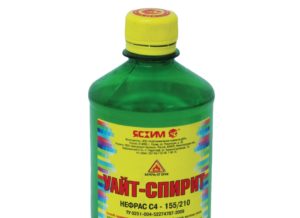
Varieties and composition
Washes are divided according to the type of paint to be removed:
- Universal - suitable for various surfaces: metal, concrete, wood. They have a high shelf life and are able to dissolve even powder coatings, but are useless for water dispersion, acrylate and latex paints.
- For oil coatings. Contains organic baking powder, thickener and solvent. Shake the mixture before use.
- For water-based coatings. The mixture is almost identical in composition with water dispersion removers. It is advisable not to purchase liquid with hydrochloric acid in the composition.
- Express washes. They have a fast exposure time - just a few minutes.
- For powder coatings. Due to the high strength of powder coatings, stronger and more toxic washes are used.
Universal products are less expensive and are suitable for almost all types of paints, but it is recommended to use them in extreme cases, because they often do not completely dissolve the coating immediately, and thus their consumption increases.
Since the flushing liquid works only until it evaporates completely, wax or paraffin is added to some washes. These materials slow down the evaporation process, thereby improving the effect of the wash. But they have a drawback: paraffin reduces the adhesion ability of the metal.
Sometimes just water and a cleaning agent are not enough to remove paraffin or wax. In such cases, acetone or another organic solvent is used. On the modern market, you can find paraffin-free cleaning agents, more modern evaporation inhibitors are added to their composition. Such products do not require subsequent special cleaning of the surface.
By the type of consistency, the following types of washes are distinguished:
- liquid;
- in the form of a gel;
- sprays;
- water soluble powders;
- pasty.
The advantage of gel solvents is the ability to apply them on a vertical surface and even on ceilings due to their viscosity.
Care must be taken with sprays: it is necessary to spray the composition at a distance of 25-30 cm from the surface and in an upright position, at a great distance from sources of fire (do not differ in fire resistance) and use closed clothing and goggles.
Paste removers are well suited for profiled surfaces because they penetrate perfectly into all depressions that, for example, a liquid solvent cannot handle. Liquid formulations are best applied to flat surfaces.
Coating remover can be applied with a brush if the surface has uneven texture and fine detail. For a large surface with an even texture, it is preferable to use a roller. With a spray gun, you can apply a wash in a liquid state.
By the types of components in the composition of the washes are divided into the following categories:
- acidic (hydrochloric acid is often present);
- alkaline;
- organic (characterized by the absence of alkalis and acids in the composition).
Popular removers include:
- Aerosol remover ABRO PR-600.It is safe and easily washed off with water, does not contain alkalis. The softening time of the paint is approximately 10-20 minutes. Suitable for cleaning acrylic, epoxy, polyurethane coatings.
- Washing off "SP-7". The composition is based on organic components, it is also safe. Suitable for removing oil, acrylic, epoxy and alkyd coatings. This Russian-made remover has all the necessary advantages: fire resistance, rapid paint destruction, penetration into deep layers of the coating, removal of corrosion traces. It is used for both horizontal and vertical surfaces.
Removing oil paint
There are many chemical removers on the market for removing oil paints (eg Constanta, Neomid, Dufa Abbeizer). They contain acetone, paraffin, organic solvents. The action of the washes is noticeable already after 5-10 minutes: the coating softens, deforms, after which it is easy to remove it with a spatula.
Material consumption can fluctuate between 150 and 400 grams per square meter. The specific consumption indicator is almost impossible to determine in advance, since it largely depends on the thickness of the paint and varnish layer. Based on the above, it is recommended to buy a wash with a certain margin.
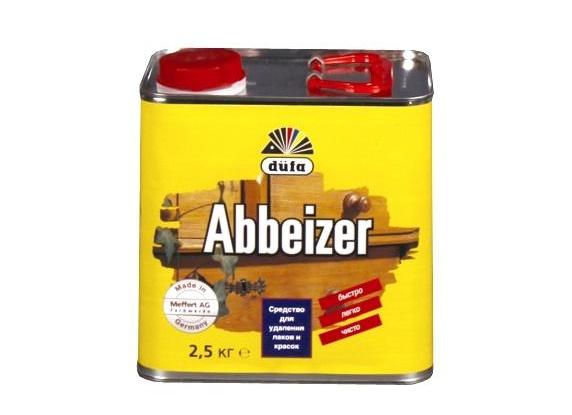
Washing composition "Constant"
As an example of a wash, consider the composition from the Ukrainian trade mark "Constanta". "Constanta" can be used to remove oil, pentaphthalic and glyphthalic paints, varnishes, drying oils from wood and metal surfaces.
"Constanta" contains organic solvents, disintegrants, thickeners. Externally, the wash looks like a thick gray-white or brown-yellow suspension. The average consumption of the "Constanta" preparation is from 150 to 170 grams per layer.
Technical parameters of the cleaning agent:
- The share of non-volatile components is from 2 to 10%.
- The level of evaporation at a temperature of 20 degrees above zero is up to 6%.
- The time it takes to wash off one layer is up to 20 minutes.
- Corrosive effect on metal - from 20 minutes.
Note! The drug should be stored in a sealed container, away from direct sunlight or heating appliances. The composition does not need to be diluted with a solvent, as it is already ready for use
However, the solution must be thoroughly shaken before use: it is important to achieve its homogeneity. If, even after shaking, delamination remains (usually this is a consequence of storage at low temperatures), it is recommended to heat the jar in a water bath. The composition does not need to be diluted with a solvent, as it is already ready for use
However, the solution must be thoroughly shaken before use: it is important to achieve its homogeneity. If, even after shaking, delamination remains (usually a consequence of storage at low temperatures), it is recommended to heat the jar in a water bath
The composition does not need to be diluted with a solvent, as it is already ready for use
However, the solution must be thoroughly shaken before use: it is important to achieve its homogeneity. If, even after shaking, delamination remains (usually a consequence of storage at low temperatures), it is recommended to heat the jar in a water bath
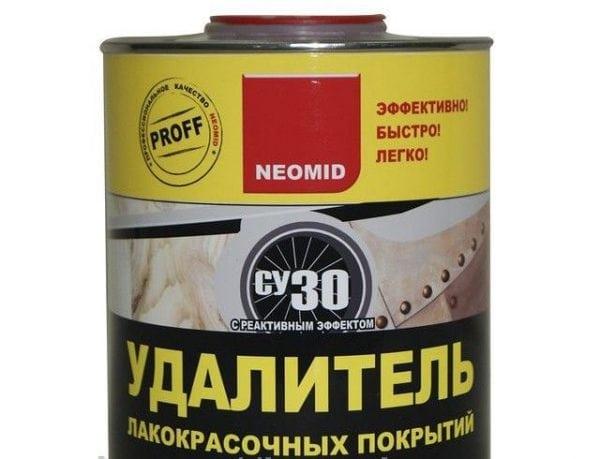
A wash is applied with a brush or roller at an air temperature of at least 10 degrees Celsius. After about 20 minutes, the paint will begin to soften and peel off. If the layer is too thick and cannot be removed immediately, you can repeat the surface treatment with a cleaning compound.
After removing the coating, the surface should be wiped with a solvent, but not any, but from a highly volatile group. This is an important point as solvent residues can destroy the new finish.
If you output oil paint stain from clothes, then it must be washed.
Folk remedies
If there is no time or money to purchase a washing composition, the oil coating can be washed off using the following time-tested folk methods:
- Mixtures of turpentine with ammonia. The solution is made in the following proportion: for 2 parts of ammonia, we take 1 part of turpentine. Apply liquid with a brush, wait for an hour until the coating begins to swell. We remove it with a spatula, rinse it, dry the cleaned surface.
- A solution of quicklime (70%), potash (30%). Water is added in such a way as to obtain a viscous mixture. Apply the finished substance to the desired area, wait for at least 12 hours, then remove the paint and varnish with a spatula.
- A paste-like mixture of chalk and lime dough. Prepare the composition as follows: mix 5 kilograms of chalk with the same amount of lime dough. Add some 20% caustic soda. Put the pasty substance in a 2 mm layer on the material to be processed. Already after 60-90 minutes, the paint and varnish layer will become pliable, it can be removed mechanically.
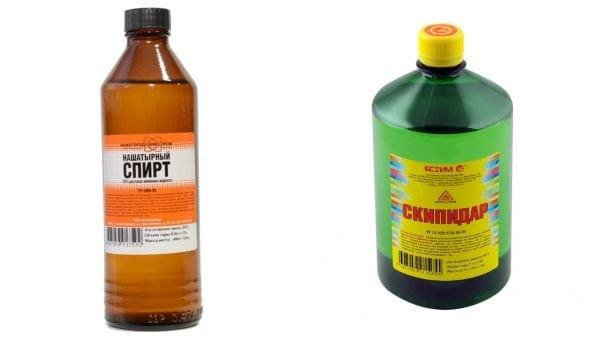
How to remove?
Before treating a metal surface with a washing solvent, you must first thoroughly clean the dirt and dust from the metal, and then proceed to applying the remover.
The detergent composition is kept on the surface for about 20-30 minutes, the exact time is indicated on the packaging of the product. In order to increase the evaporation time, the applied composition is covered with a dense plastic wrap.
When the paint has softened well, wrinkles and begins to flake off by itself, you can begin to remove it with a spatula or wire brush. Removing the dissolved paint is easy. After the paint is completely removed from the metal, it is necessary to clean the surface from the remnants of the remover. The packaging also indicates the means that are intended for these purposes.
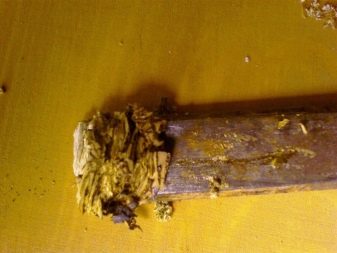
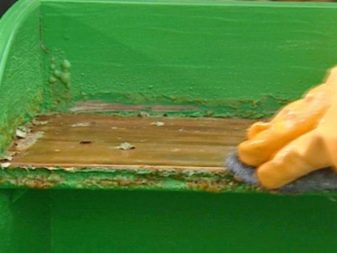
If after the first application of the paint stripper it was not possible to completely clean the surface, it is necessary to repeat this procedure as many times as necessary.
If it is necessary to wash off the powder paint from the aluminum surface, it is worth considering the fact that for aluminum, compositions are selected without alkalis that can destroy it.
Considering that solvents are chemical and toxic substances, it is necessary to take care of the safe handling of these materials in advance - it is recommended to use protective clothing, goggles and respirators.
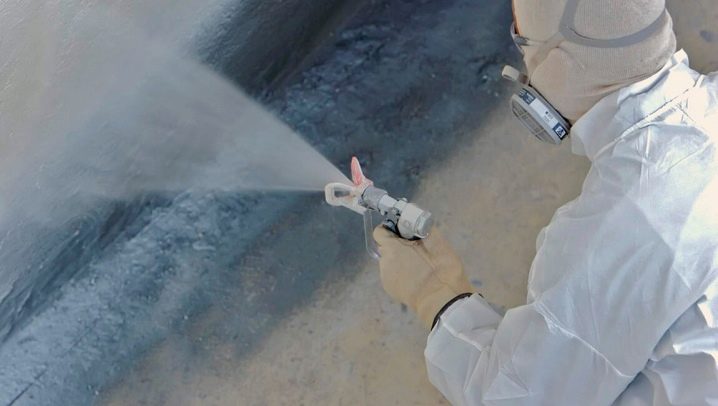
After using the wash, it is advisable to thoroughly ventilate the room.
Based on customer reviews, we can conclude that removing paint from metal is a simple and quick process that anyone can handle on their own. There should be no difficulty in cleaning surfaces, provided that the cleaning agent is correctly selected depending on the type of old coating, and all points in the instructions attached to the package are observed.
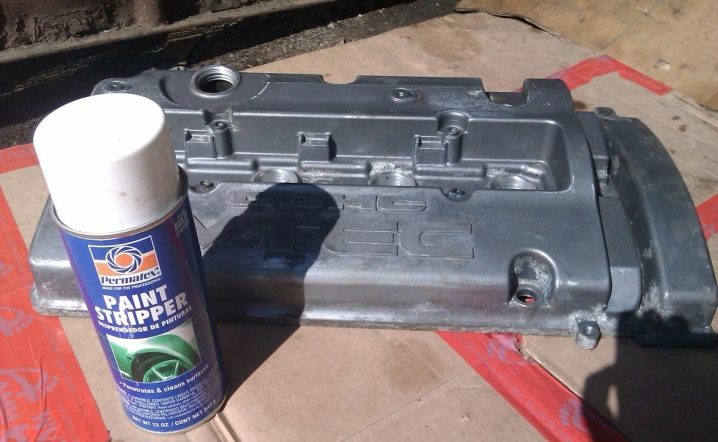
See below for more details.
What to look for when choosing
Choosing the best paint remover for metal surfaces is always a compromise. So, before buying, be sure to analyze the following composition parameters:
Specialization. So, paint removers are: universal, for oil coatings and water-based coatings, express removers, for powder paints. For a car, a universal compound is best suited.
Smell. Often, cheap paint removers have an unpleasant, "chemical" odor, which is not only unpleasant for a person's sense of smell, but also harmful to his body. Accordingly, it is advisable to choose formulations, the instructions of which clearly indicate that they are odorless. This is especially true if the work is supposed to be performed indoors without forced ventilation.
Consumption of paint remover.Everything is simple here - the larger the surface can be treated with a certain amount of the product, the better.
Application method. Small metal parts can be immersed in a container that has been filled with liquid paint remover. If we are talking about a large part (as happens in most cases), then manual application takes place using a brush, roller or spray gun.
Adhesion and thixotropy (the property to adhere to an inclined surface). These properties are relevant if it is supposed to process, respectively, inclined or vertical surfaces.
It doesn't matter for horizontal surfaces.
Corrosive activity. If the rust remover is highly corrosive, there is always a risk that the agent could damage the thin-walled product.
Accordingly, it is desirable to choose a remover with a low corrosiveness index and strictly control the residence time of the substance on the treated surface (no more than half an hour).
Security. In this case, we mean fire and explosion safety. This factor is important for containers of large volumes, for example, stored in a car service. For them, it is necessary to provide for the correct storage conditions, in particular, away from open sources of fire and heating appliances.
Application temperature. This indicator is important if paint removal is planned in winter in an unheated room.
In particular, you need to pay attention to the information on the packaging about the temperature range of operation and storage (use is allowed only with a positive one).
Please note that there are special products on sale for removing so-called graffiti (inscriptions on the car body or garage doors). With their help, you can only get rid of the pattern directly and not damage the paint on the main surface.
Instructions for use
- 1 First of all, the surface should be thoroughly cleaned of dirt.
- 2 The cleaner is applied with a brush or roller, depending on the size of the surface to be treated. In the event that the flushing agent is liquid, then we apply it with a spray bottle.
- 3 Then cover the applied layer of cleaning agent with polyethylene material. This will help speed up the process.
- 4 According to the instructions, we timed the required time.
- 5 Then we remove the polyethylene, and you can start removing the peeling paint. It is recommended to use a wire brush, spatula. The layers of paint that have fallen off must not be trampled down; they must be removed immediately.
- 6 At the end of cleaning, inspect the surface. If there are still some spots with paint, then it can be scraped off with a spatula. If the area with paint remains large, the dissolution process must be repeated.
- 7 After complete cleaning of the surface from the paint, it is necessary to wash off the residual solvent. This is done using the means indicated in the instructions.
As you can see, it is not difficult to buy and use a paint remover for its intended purpose, you just need to carefully and thoughtfully read the instructions for use. When choosing a specific cleaning agent, you should not be sure that a more expensive product will have the best effect.
Additional Information: Means for removing old paint from metal
Many people are wondering which metal paint stripper is the most effective. It's no secret that it is not easy to clean old paint from metal yourself using the available tools. Removing old paint from a plastic bumper?
In addition, using all kinds of grinding tools, it is possible to remove not only the paint itself, but also some of the metal, which is certainly undesirable.
The best solution in this case will be a tool for removing old paint from metal.Special washes, which in a short time literally corrode the coatings of many years ago, without affecting the base, are presented in a wide range on the domestic market.
It is possible at first glance to go the easy way (that is, paint without first cleaning the surface) seems to be the optimal right decision, but it is not! It will only be a waste of time, effort and money, since the result will be short-term and after a while the new paint will swell, begin to peel off and begin to fall off in large pieces. In order to avoid this, you must:
Now more about the removers and washes themselves. All cleaners work in the same way - they help dissolve and soften old coatings. Removers differ among themselves in specificity and scope, as well as in consistency and appearance. Funds are:
How to remove old paint from metal in the least labor-intensive way? Most likely, you will not find a more convenient method than paint removal. Such chemical liquids have been used in industry for more than a dozen years, and therefore they can be easily purchased for home use. Washes can be based on both organic and alkaline bases.
In almost all cases, the use of chemical compositions will be more effective than removing old paint from metal by mechanical means. You cannot do without a wash if you need, for example, to remove an old paintwork from alloy wheels. It is extremely difficult or even impossible to remove the paint between the spokes mechanically.
At a car store, you can find liquids specifically for removing paint coats from a car. The wash helps to clean the surface down to metal or remove the required number of coats of paint material. The Bodie company offers a rather effective option - Body 700 liquid. Removal of paint from a car will take place in a matter of minutes, and you do not have to work for this.
Old paint remover reviews? But we also suggest looking at Abro products with the following features:
The wash is applied in an even layer and kept on the surface until cracking and swelling of the coating for 3-15 minutes. If areas with non-removed coating remain on the surface, then such areas are re-treated with a wash. The softened coating is removed with a spatula, scraper or using a high pressure washer; The total residence time of the wash on the surface should not exceed 150 minutes.
Prevent drying of the wash on the treated surface!
Varieties of paint washes
Remover for paint on the construction market is presented in a wide variety. Manufacturers offer a variety of formulations that can cope with specific tasks. Therefore, the choice must be made with knowledge of the options that are available. Then it will be possible to choose the best option, and the surface will not suffer and it will be possible to carry out further painting without problems.
There are general divisions that make the choice easier. Funds are intended for specific types of paints, and are also divided according to the form of release, here the method of use differs.
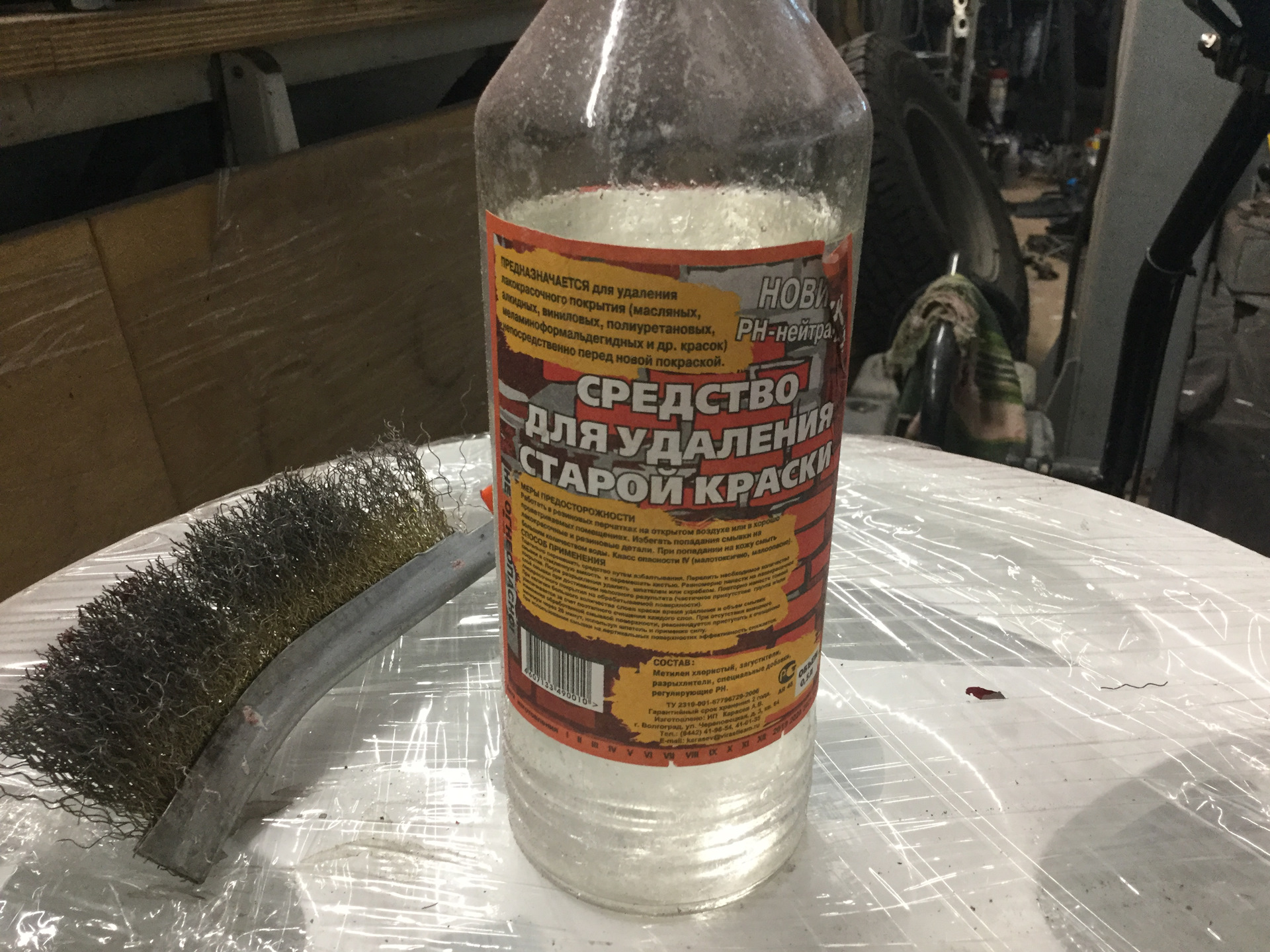 Remover for paint on the construction market is presented in a wide variety.
Remover for paint on the construction market is presented in a wide variety.
Depending on the basis
Separation by the type of base does not require clarification, choose a tool that is suitable for the paint used for painting earlier. The following types are distinguished:
- Substances for washing water-based, oil-based dyes;
- Special compositions for working with metal products;
- Express washes. As the name suggests, they help to clean up very quickly;
- Versatile, which can be used for many types of coatings. A convenient option if you do not know what paint was used before;
- For powder coatings.
By form (liquids, gels, powders and aerosols)
This qualification affects the way of processing, and is chosen based on the preferences of the master. Manufacturers produce the following options for washes in shape:
-
In cans, the application does not require special skills, the application is easy, it is only necessary to maintain a distance of 200-300 millimeters from the product on which the agent will be applied;
-
Liquids, can be used when working with horizontal surfaces, it is also possible to completely immerse parts in the liquid. Similar options can be prepared with your own hands, the process will be described at the end of the article;
-
Gels and pastes (powders). It is convenient to work with them when it is required to apply the product on a vertical surface, they will not drain over the surface, they can penetrate deep into the base in order to qualitatively soften the paint and varnish material. They are suitable for removing paint from, for example, a fence, there will be no need to remove the elements to remove old paint from them. Among the gels, the Prestige remedy, a Russian manufacturer, stands out.
All substances have a different price, so it is possible to choose the option that will be available.

